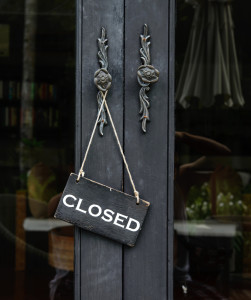Last week I discussed the general parameters of the private equity market for small and midsized businesses. A rational look at the number of “funds” active in the market, measured against the number of legitimate candidates for investment or acquisition, paints a clear view of why so many small companies are receiving calls from interested investors. There simply aren’t enough profitable, growing companies to buy.
I put “funds” in quotes because not all Private Equity Groups are funds. There is a big difference between “We have money” and “We can get money.” Your first questions to any purported acquirer should be about the source and condition of their funds.
Some will say they have investors ready to fund. Walk away. You don’t have the time or energy to let your company be used as a beauty contestant for someone who is little more than a broker.
Others will say they have “dry powder.” That’s the PEG term for an actual bank account in which their investors have deposited real money. “Dry powder” is the amount they have available to invest. Ideally it should be sufficient to purchase your business for cash. although that might not be how things eventually wind up.
 For many of my clients who are approached, the next questions disqualify most of the remaining prospects. The conversation goes something like this:
For many of my clients who are approached, the next questions disqualify most of the remaining prospects. The conversation goes something like this:
Q: What related acquisitions in our industry are currently in your portfolio?
A: We have over $400 million dollars to invest
Q: What is your strategy for our industry, and why do you find it attractive?
A: We have over $400 million dollars to invest
That’s an oversimplification, but not by much. Money is only money, and merely having it is no guarantee of success. You should remember that the average PEG has promised a target level of return to its investors, and most have a deadline for investing the money. If they fail to do so, the money reverts to its original owners, usually less the PEG’s costs of operations. That (not surprisingly) greatly diminishes the PEGs chance of raising more from those folks next time around. If that deadline is approaching, some funds get much looser about how and where they find deals.
Let’s say you find a fund that is already focused in your industry and has a strong plan for growing their investment. That is usually either by adding more companies like yours, or by using their relationships to generate a lot of new revenue. Whether you should give up control (and you are always giving up control) of the business depends largely on your personal objectives.
- Family Financial Security: You want to take enough money off the table to eliminate the risks your family has lived with since you started the business. You still enjoy working, but would like to have more of a safety net.
- Executive Expertise: As hard as it may be to admit, you’ve taken the company as far as you can. It has a lot of upside potential, but you know that you aren’t the one to take it there.
- Capital Investment: You’ve identified substantial opportunity if you had the equipment or network to pursue it, and the investors agree with you.
- Two bites: As I described last week, you see the investment partner as bringing the ability to make the minority share you retain worth more than the majority you are selling now.
- Exit Strategy: Your new partners understand and agree on a time frame and method to let you move on to the next stage of your life.
I recently had a client who was offered a substantial 8-figure sum for his company. He is well under 40 years old. He decided that the company was (and the investors agreed) positioned for a period of very rapid growth, and he would rather make that run as a sole owner. Those members of his peer board who were over 50 years old strongly advised that he take the money and start another business if he had that much appetite for risk.
Age and attitude govern what is or isn’t a good deal. First you have to know what you want, but even then professional investors can’t read your mind. Unless you tell them what your objectives are (and you will have to eventually), they can only talk about their investment, and money is only money.
I have just published a new eBook, “24 Tips for More Effective Meetings.” It is available for FREE when you sign up to receive “Awake” weekly. If you are already a subscriber, just reenter your email address in the small sign-up form above right (you won’t receive duplicate posts). You will be automatically redirected to a download page. Thanks for subscribing!




